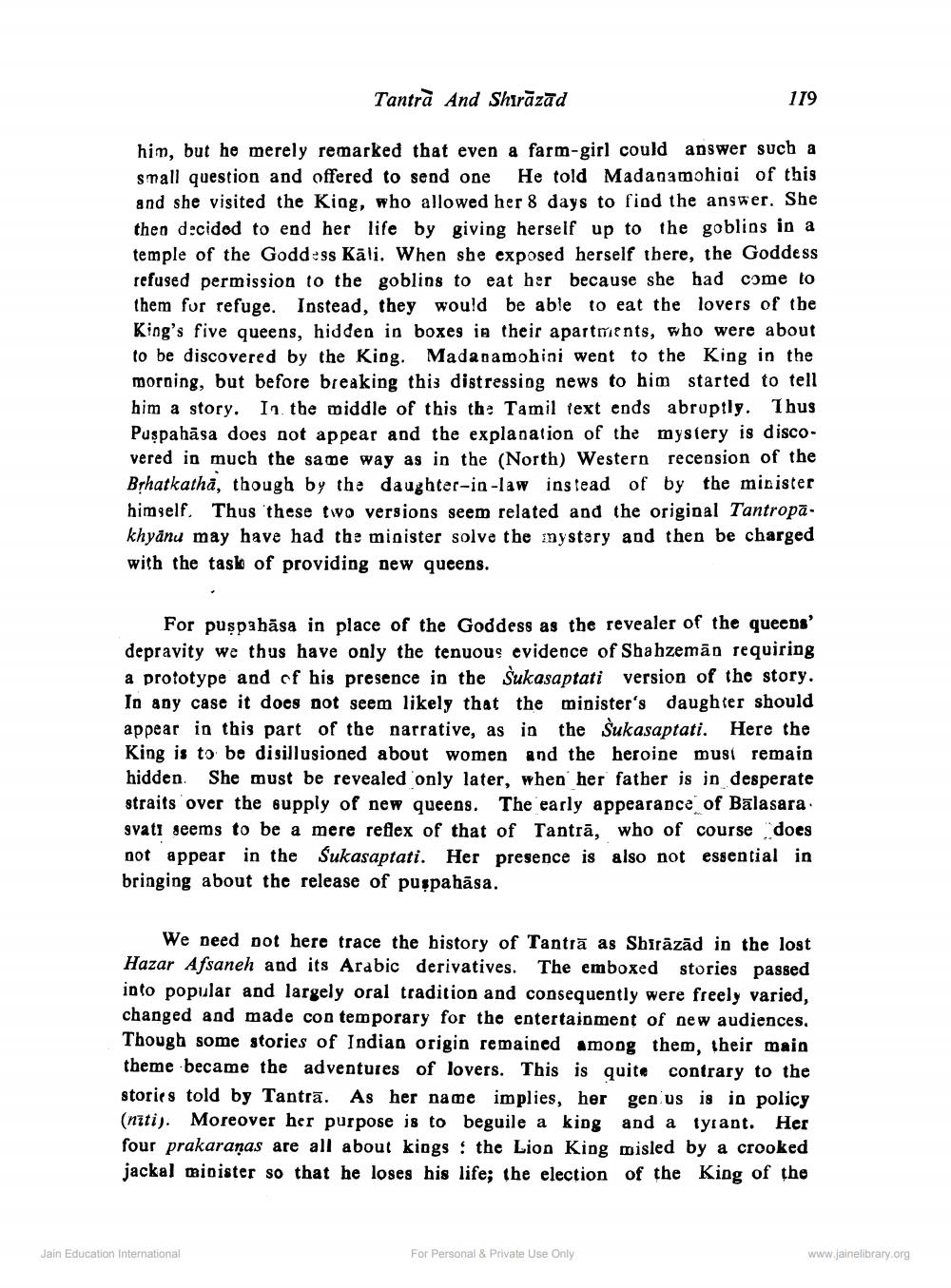________________
Tantrà And Shirāzād
119
him, but he merely remarked that even a farm-girl could answer such a small question and offered to send one He told Madanamohioi of this and she visited the King, who allowed her 8 days to find the answer. She then decided to end her life by giving herself up to the goblins in a temple of the Goddess Kāli. When she exposed herself there, the Goddess refused permission to the goblins to eat her because she had come to them for refuge. Instead, they would be able to eat the lovers of the King's five queens, hidden in boxes in their apartments, who were about to be discovered by the King. Madanamohini went to the King in the morning, but before breaking this distressiog news to him started to tell him a story. In the middle of this the Tamil text ends abruptly. Thus Puspahāsa does not appear and the explanation of the mystery is discovered in much the same way as in the (North) Western recension of the Byhatkatha, though by the daughter-in-law instead of by the minister himself. Thus these two versions seem related and the original Tantropā. khyānu may have had the minister solve the mystery and then be charged with the task of providing new queens.
For puşpahasa in place of the Goddess as the revealer of the queens' depravity we thus have only the tenuous evidence of Shahzemān requiring a prototype and of his presence in the Sukasaptati version of the story. In any case it does not seem likely that the minister's daughter should appear in this part of the narrative, as in the Sukasaptati. Here the King is to be disillusioned about women and the heroine must remain hidden. She must be revealed only later, when her father is in desperate straits over the supply of new queens. The early appearance of Balasara svati seems to be a mere reflex of that of Tantrā, who of course does not appear in the Sukasaptati. Her presence is also not essential in bringing about the release of puspahāsa.
We need not here trace the history of Tantra as Shirāzād in the lost Hazar Afsaneh and its Arabic derivatives. The emboxed stories passed into popular and largely oral tradition and consequently were freely varied, changed and made con temporary for the entertainment of new audiences. Though some stories of Indian origin remained among them, their main theme became the adventures of lovers. This is quite contrary to the stories told by Tantrā. As her name implies, her genus is in policy (niti). Moreover her purpose is to beguile a king and a tyrant. Her four prakaranas are all about kings : the Lion King misled by a crooked jackal minister so that he loses his life; the election of the King of the
Jain Education International
For Personal & Private Use Only
www.jainelibrary.org




